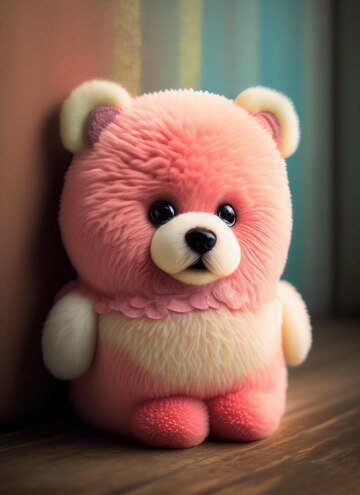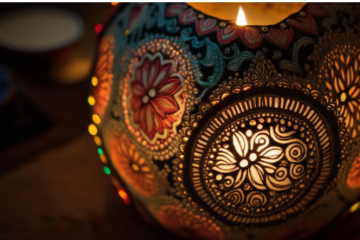Plushies, also known as stuffed animals or plush toys, have been cherished by people of all ages for their comforting and huggable qualities. These soft, cuddly companions come in countless shapes, sizes, and designs, making them a favorite for both children and adults alike. In this guide, we’ll explore everything you need to know about plushies, from their history and types to their care and unique uses.
Introduction
Plushies are more than just toys—they often hold sentimental value and can become treasured keepsakes. Whether you’re a collector, a parent looking for the perfect gift, or just curious about the world of plush toys, understanding their appeal and variety will deepen your appreciation for these adorable creations.
The History of Plushies
The history of plushies dates back to the late 19th century:
- Early Beginnings: The concept of stuffed animals began with the invention of the first teddy bear in 1902, named after President Theodore Roosevelt. This bear set the stage for the widespread popularity of plush toys.
- Cultural Impact: Over the decades, plush toys have evolved to reflect cultural trends and characters from popular media, becoming a staple in both childhood and adult collections.
- Modern Innovations: Today’s plushies include a wide range of materials and designs, incorporating high-tech features like sound effects and interactive elements.
Types of Plushies
Plushies come in various forms, each with its unique charm:
- Classic Stuffed Animals: Traditional plush toys include bears, bunnies, and dogs. They are often characterized by their simple designs and soft, plush fabric.
- Character Plushies: These are based on characters from movies, TV shows, or video games. Examples include characters from Disney, Pokémon, and anime.
- Custom Plushies: For a more personalized touch, custom plushies are designed based on specific requests, including custom characters or likenesses.
- Mini Plushies: Small, portable plushies that can be used as keychains or collectibles. They’re perfect for carrying around or adding to a collection.
Choosing the Right Plushie
When selecting a plushie, consider the following factors:
- Age Appropriateness: Ensure the plushie is suitable for the age of the recipient. For young children, choose ones without small, detachable parts.
- Material Quality: Look for plushies made from durable and hypoallergenic materials, especially if the toy will be used frequently or by sensitive individuals.
- Design Preferences: Whether you’re looking for a cute bear or a character from a favorite show, choose a design that aligns with the recipient’s tastes.
Caring for Your Plushie
Proper care will help keep your plushie looking and feeling its best:
- Cleaning: Follow the care instructions on the label. Many plushies are machine washable, but some may require spot cleaning or hand washing.
- Storage: Store plushies in a clean, dry place to avoid dust and pests. For collectible plushies, consider using display cases to protect them.
- Repairing: If a plushie gets damaged, minor repairs like stitching loose seams can be done at home. For significant damage, professional repair services are available.
Plushies in Popular Culture
Plushies have made a significant impact on popular culture:
- Collectibles: Many people collect plushies as hobbies, seeking out limited editions or rare designs.
- Media Appearances: Plush characters often appear in movies, TV shows, and video games, further cementing their place in popular culture.
- Merchandising: Plushies are commonly used in marketing and merchandise for various brands and franchises, adding to their popularity.
DIY Plushie Projects
If you’re crafty, you might enjoy making your own plushies:
- Materials Needed: Fabric, stuffing, thread, and a pattern or template.
- Basic Steps: Cut the fabric according to your pattern, sew the pieces together, and stuff the plushie with filling. Customize with features like eyes and accessories.
- Advanced Techniques: For more intricate designs, consider adding details like embroidery or using advanced sewing techniques.
Unique Uses for Plushies
Beyond being cuddly toys, plushies can serve various purposes:
- Comfort Objects: Many people use plushies as comfort objects or stress relievers, finding solace in their softness.
- Decorative Items: Plushies can be used as part of home decor, especially in children’s rooms or themed spaces.
- Educational Tools: Plush toys can be used in educational settings to teach children about different animals or characters.
Plushie Collecting
Collecting plushies can be a rewarding hobby:
- Building a Collection: Start by focusing on a specific theme or character. Keep track of your collection and seek out rare or limited-edition plushies.
- Caring for Collectibles: Protect your collectible plushies from damage by storing them in a clean, dust-free environment and handling them with care.
- Community: Join online forums or local groups dedicated to plushie collecting to connect with fellow enthusiasts and stay updated on new releases.
The Psychological Benefits of Plushies
Plushies can have positive effects on mental well-being:
- Stress Relief: The act of cuddling a plushie can reduce stress and provide comfort, much like a security blanket.
- Emotional Support: Plushies can serve as emotional support tools, providing a sense of companionship and security.
- Nostalgia: For many adults, plushies evoke feelings of nostalgia and comfort from childhood, helping to soothe and relax.
Conclusion
Plushies are more than just cute toys—they hold a special place in our hearts and cultures. Whether used for comfort, decoration, or as collectibles, their enduring appeal makes them a beloved item across generations. By understanding their history, types, and care, you can fully appreciate and enjoy these cuddly companions.
FAQs
- Can I machine wash my plushie?
Most plushies can be machine washed, but always check the care instructions on the label to avoid damage. - How do I clean a plushie with electronics or sound effects?
For plushies with electronic components, spot clean only and avoid getting the electronics wet. Use a damp cloth for cleaning. - What materials are commonly used for plushies?
Common materials include cotton, polyester, and synthetic fibers, which provide softness and durability. - Are there any plushies designed for allergies?
Yes, hypoallergenic plushies are available, made from materials that are less likely to cause allergic reactions. - How can I store plushies to keep them in good condition?
Store plushies in a clean, dry place, ideally in a display case or protective covering to prevent dust and damage. - You can see lates updates on: thefsiblog



